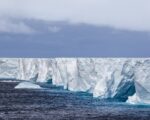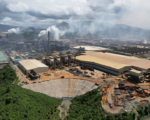A controversial initiative aimed at refreezing the Arctic is generating promising early results but faces significant scrutiny from scientists concerned about its ecological impact and feasibility on a large scale. The project, spearheaded by the UK-based start-up Real Ice, is testing a novel approach to thickening Arctic sea ice in an effort to slow or reverse the loss of ice during the summer months, contributing to the global fight against climate change.
Real Ice’s technique involves using electric-powered submersible pumps to draw seawater from below the ice and pump it to the surface, where it freezes and thickens the ice layer. This process also removes snow from the ice’s surface, reducing its insulating effect and encouraging more ice growth beneath. In their initial tests in Cambridge Bay, Canada, the team managed to increase the ice thickness by up to 20 inches over a four-month period, with promising results in subsequent trials.
The project, which started field tests in Alaska in 2022 and expanded to Cambridge Bay in January 2023, aims to eventually cover 386,000 square miles of Arctic ice—an area more than twice the size of California. The technology is expected to be automated using underwater drones powered by green hydrogen, which would operate without disturbing animal migration paths or shipping lanes. Real Ice anticipates that, at full scale, the project could cost between $5 billion and $6 billion annually.
Despite the encouraging early results, the project has drawn sharp criticism from many climate scientists. Critics, including Jennifer Francis from the Woodwell Climate Research Center and Liz Bagshaw from the University of Bristol, warn that while local ice thickening is feasible, the scale required to make a significant impact on the Arctic ecosystem and global climate may not be achievable. They also point to the potential risks of large-scale interventions in such a delicate environment.
These concerns are compounded by ethical questions surrounding the project. Some scientists argue that geoengineering approaches like ice thickening divert attention from addressing the root causes of climate change, namely the burning of fossil fuels. Others worry that introducing unprecedented levels of human activity into the Arctic could have unforeseen and possibly harmful consequences on local ecosystems, such as disturbing marine life and altering algae growth patterns.
Real Ice defends its approach, emphasizing that its methods are inspired by natural processes and offer a last-ditch effort to protect a rapidly disappearing ecosystem. The company argues that the impacts of doing nothing—allowing the Arctic to continue losing ice—are far more severe.
The future of the project hinges on its ability to prove that ice thickening can be sustained over time without causing significant environmental harm. If successful, it could offer a new tool for mitigating the effects of climate change in the Arctic, but the scientific community remains divided on whether this ambitious geoengineering project can deliver meaningful results on a global scale.


















